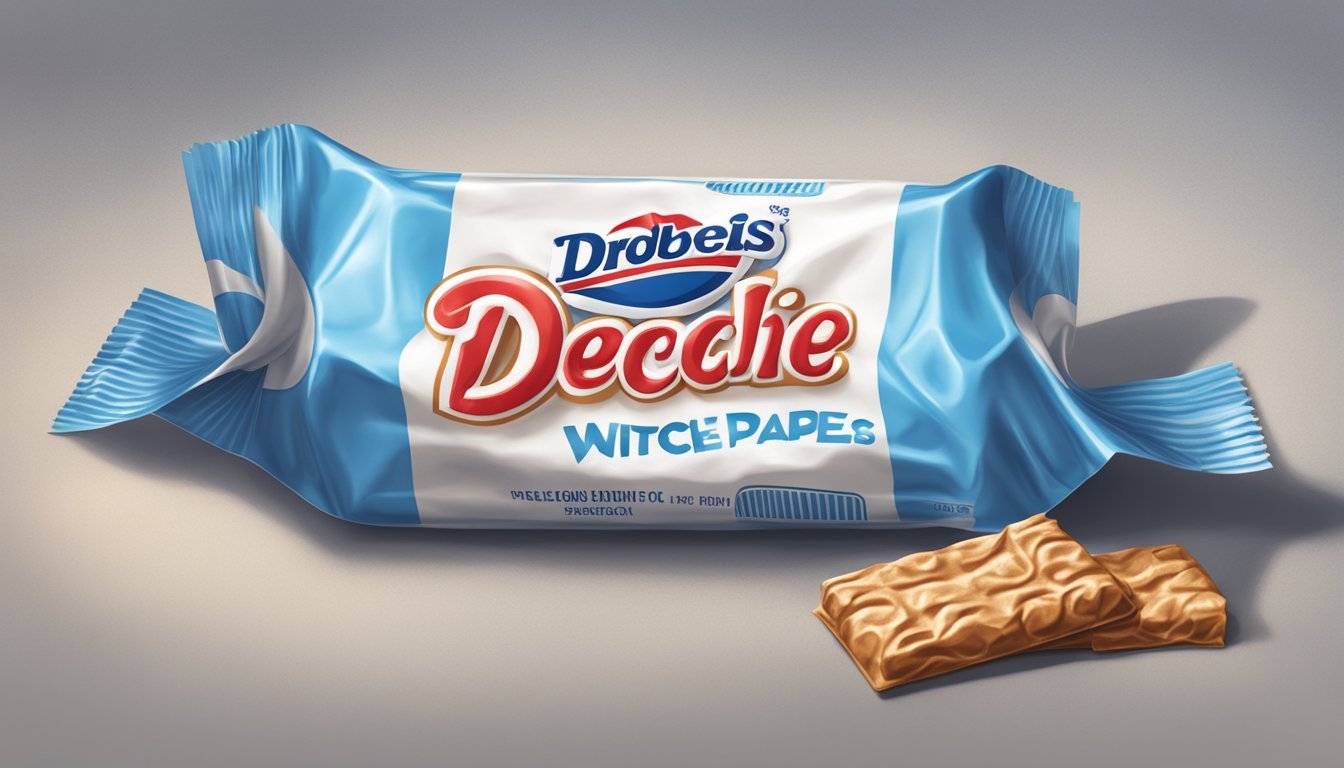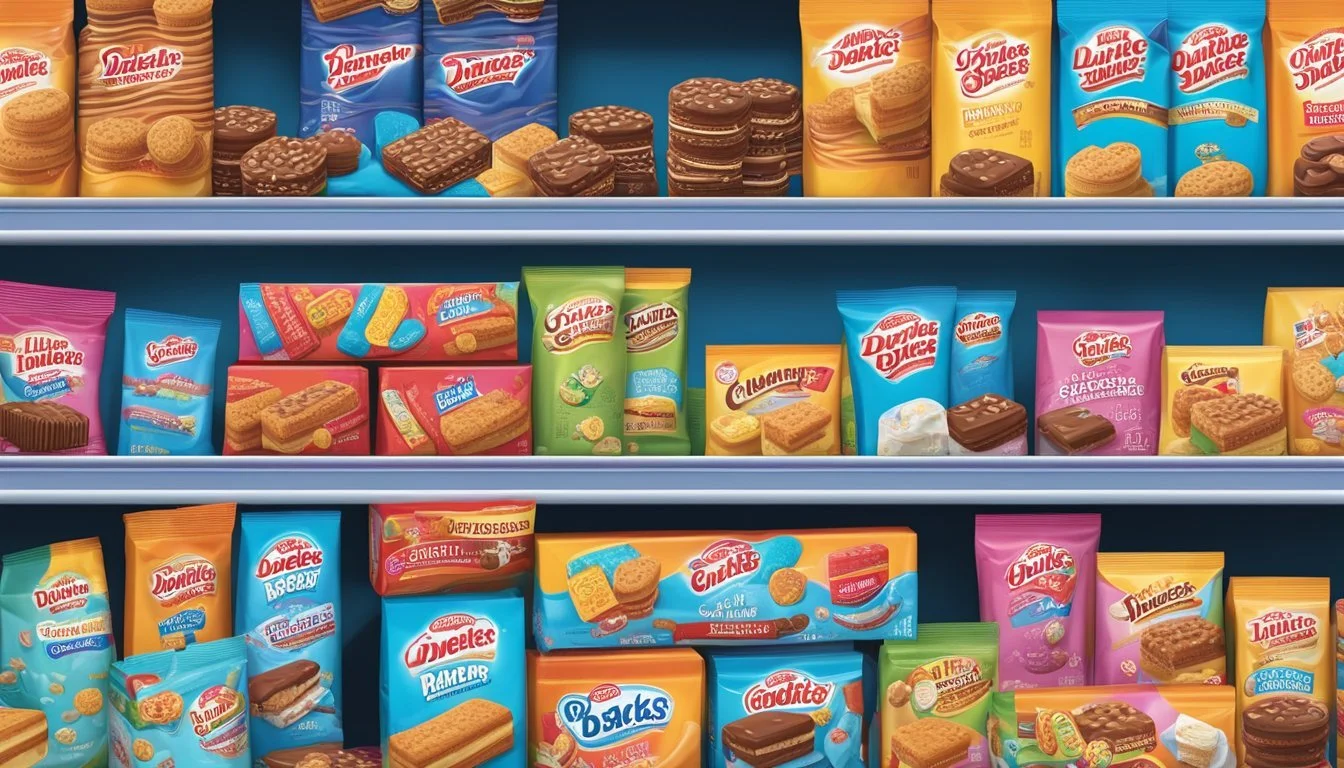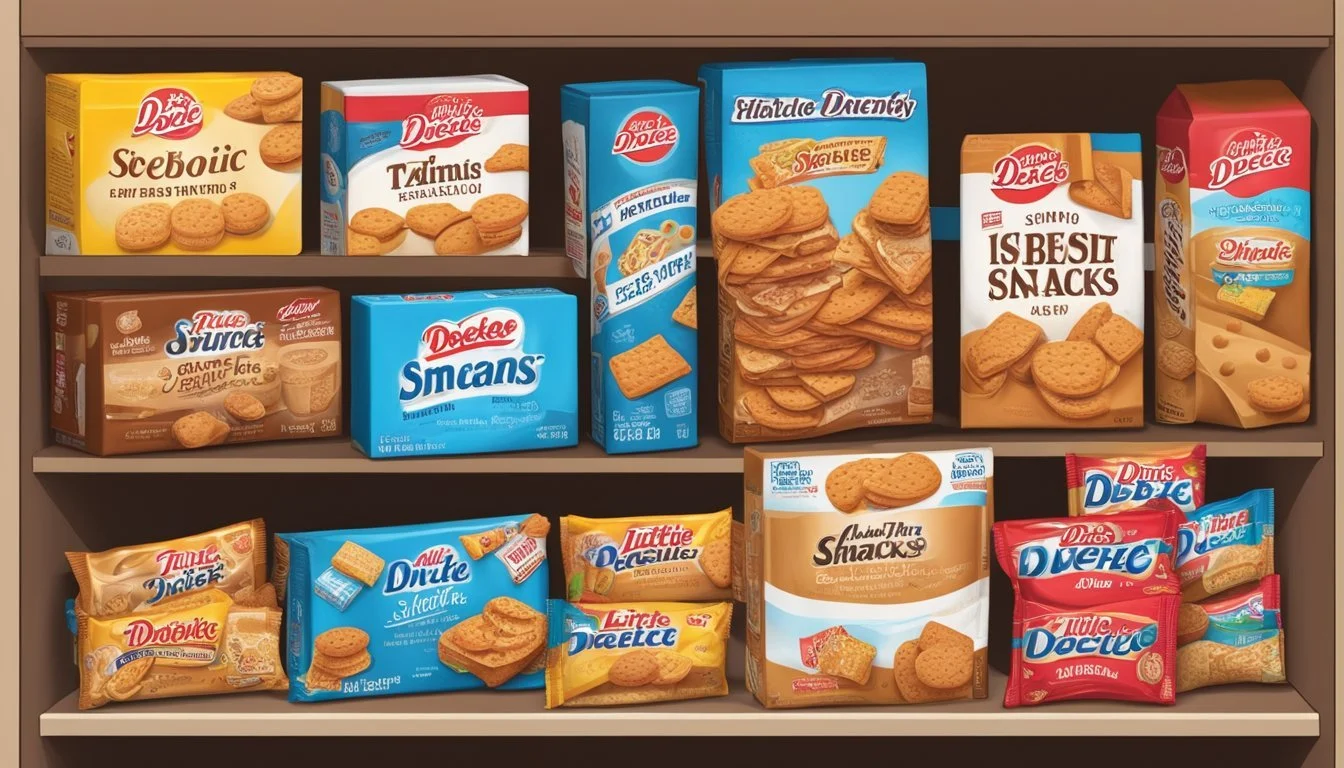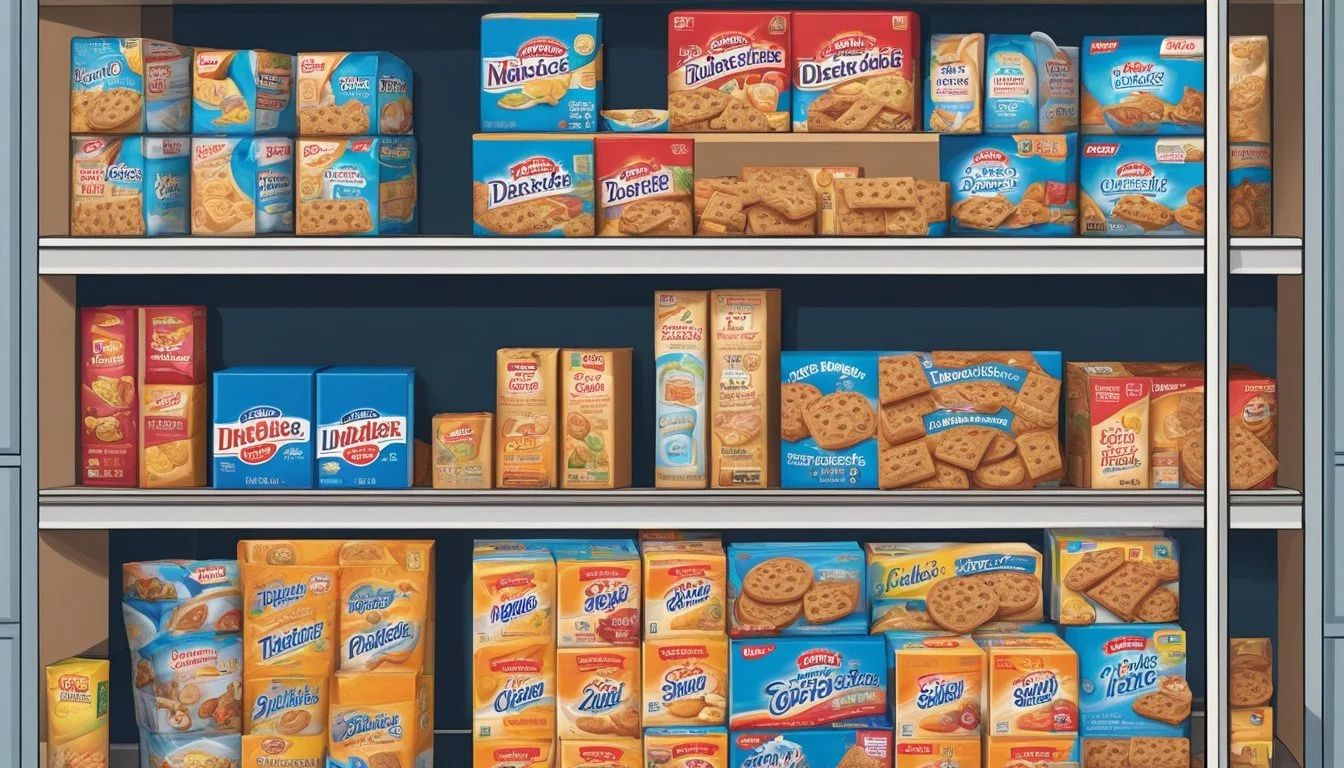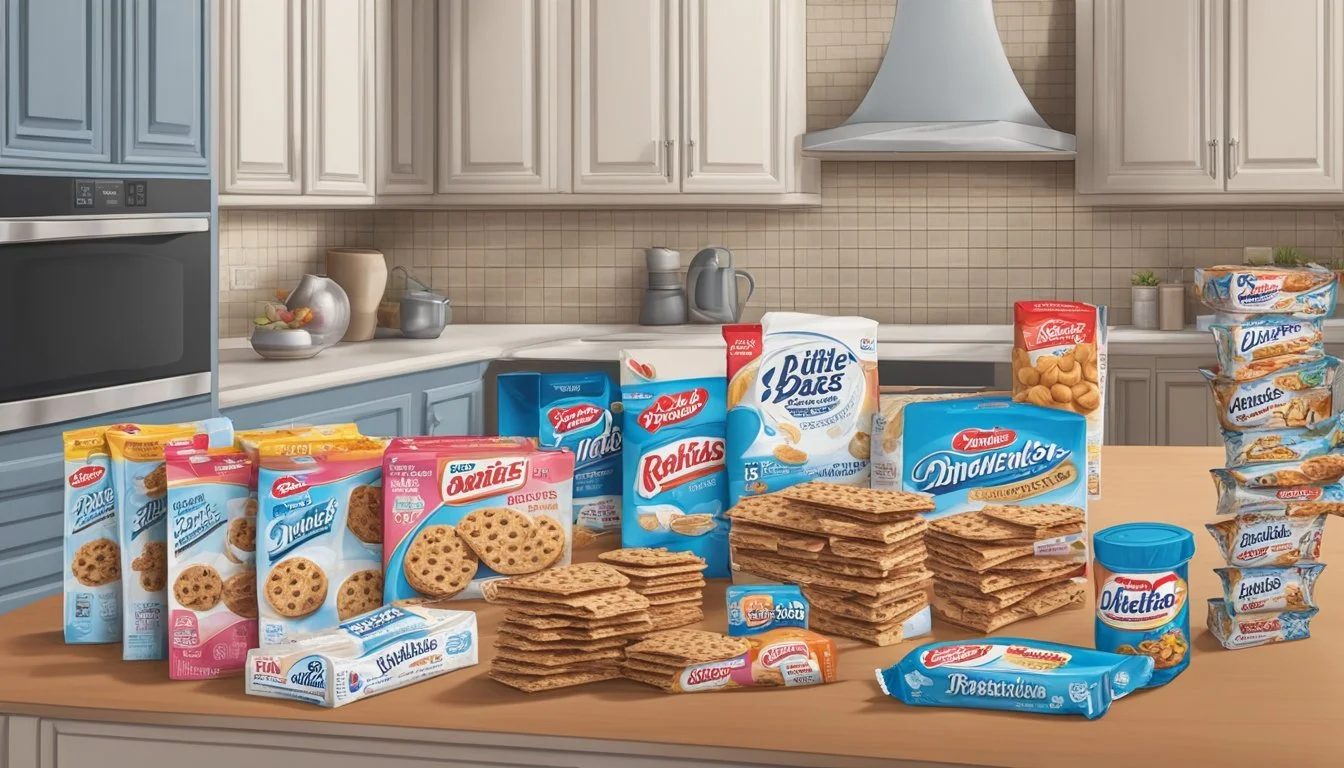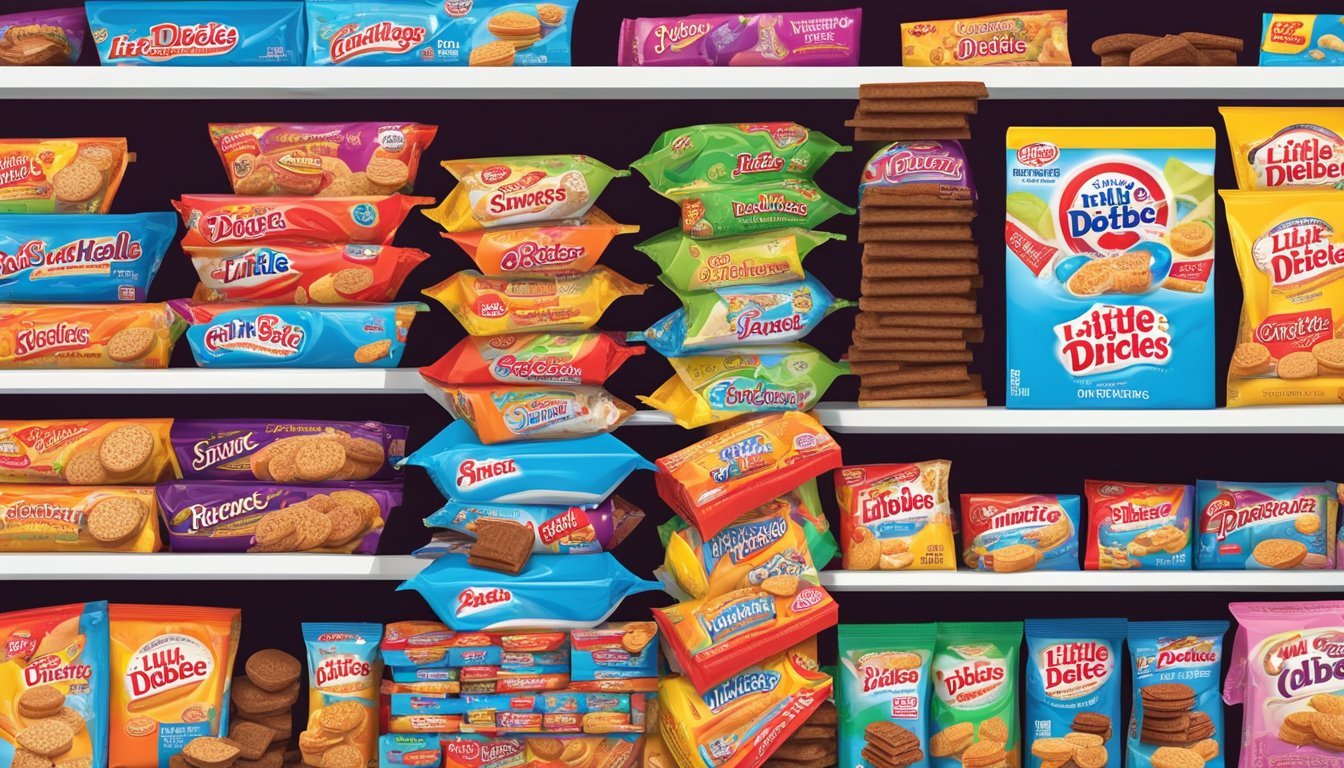How Long Do Little Debbies Last?
Unveiling Shelf Life and Freshness Tips
When it comes to snack cakes, Little Debbie is a brand that many people turn to for their sweet fix. With its wide range of products, from Nutty Bars to Swiss Rolls, Little Debbie has become a staple in pantries across the country. Yet, consumers often wonder about the shelf life of these treats and how long they can safely enjoy them past the “best by” date stamped on the package.
The shelf life of Little Debbie snacks varies by product, but they are typically designed to be consumed while at their freshest. Generally, these treats maintain optimal quality for a period ranging from a few weeks to several months. The preservation of each product depends on factors such as the ingredients, packaging, and storage conditions. Once the best by date has passed, the sensory qualities of the snacks, such as flavor and texture, may begin to decline.
To maximize freshness and ensure safety, it's important to store Little Debbie products in a cool, dry place, away from direct sunlight. If the packaging is compromised, or if there are any signs of spoilage like mold growth, off odors, or an unusual taste, it is advisable to discard the items. For those looking to extend the freshness of their Little Debbie treats, freezing them is an option, which can significantly prolong their shelf life.
Little Debbie Products Overview
Little Debbie offers an extensive variety of snack cakes and treats, known for their sweet taste and convenient packaging. They cater to a range of preferences and occasions, providing a consistent and recognizable product line.
Variety of Little Debbie Snacks
Little Debbie's assortment includes iconic items such as Oatmeal Creme Pies, Swiss Rolls, Nutty Buddy wafer bars, Zebra Cakes (how long do zebra cakes last?), and Cosmic Brownies. These products have become staples in many households, each with their own unique taste and texture. For instance, the Oatmeal Creme Pie combines soft oatmeal cookies with a creamy filling, while the Swiss Rolls offer a spiral of chocolate cake and a whipped cream filling. Cosmic Brownies are known for their dense, fudgy texture and colorful candy-coated chocolate pieces. Zebra Cakes deliver a combination of white cake and cream filling, draped in white icing with a fudge drizzle. Nutty Buddy delivers a crunchy experience with its layered peanut butter and wafers coated in chocolate.
Nutritional Information
Little Debbie products typically contain high levels of sugar and saturated fats, significant for those monitoring their dietary intake. For illustrative purposes, a Nutty Buddy wafer bar generally contains around 12 grams of fat, 10 grams of which are saturated, along with 20 grams of sugar. Oatmeal Creme Pies feature roughly 170 calories per serving, along with 6 grams of fat, and a moderate amount of cholesterol and trans fat. Cosmic Brownies flaunt about 280 calories with 11 grams of fat, and are also a source of trans fat. It's important for consumers to be aware of these nutritional contents, considering the implications on overall health and wellness. Protein content in these snacks is generally low, and while they provide quick energy from sugar and carbohydrates, they should be consumed in moderation within a balanced diet.
Understanding Food Expiration Labels
When navigating food labels, two common terms that consumers encounter are "Best By Date" and "Sell By Date." These indicators are integral to understanding food quality and safety.
Best By Date Interpretation
The Best By Date on food packaging suggests the time frame when the product is likely to have its best flavor and quality. It is not a safety date but a manufacturer's estimate for peak freshness. For instance, Little Debbie products often carry a Best By Date, implying a period during which the snack is expected to retain its intended taste and texture.
Little Debbie Swiss Rolls: Typically retains quality for 2-3 months past the Best By Date when unopened.
Little Debbie Fudge Rounds: Can be good for 4-6 months past this date in unopened condition.
Consumption of Little Debbie snacks after the Best By Date may still be safe, but there is no guarantee from the manufacturer about its taste or quality.
Sell By Date Relevance
The Sell By Date communicates to retailers when a product should be removed from shelves. Consumers should purchase products before the Sell By Date to enjoy them at their best quality. It is not a safety indicator but a guide to the store for stock rotation.
Little Debbie snacks often do not display a Sell By Date, as such information mainly serves the distributor and retailer.
Consumers do not typically need to consider the Sell By Date unless they are purchasing food items close to this date, in which case the freshness may be closer to expiring once they bring it home.
Proper Storage Practices
Proper storage practices are essential to maintain the safety, quality, and shelf life of Little Debbie snacks. Depending on the product, the suitable storage option can significantly affect its freshness and edibility.
At Room Temperature
Most Little Debbie products are designed to remain fresh at room temperature for a set period. The shelf life can range broadly, starting from two weeks to about six months. The key is to store them in a cool, dry place, away from direct sunlight and any heat sources to prevent the degradation of the snacks' quality.
Avoid moisture: Excess humidity can lead to spoilage.
Keep it cool: A pantry or cupboard away from appliances is ideal.
Refrigeration and Freezing
Dairy products: For Little Debbie items containing dairy, the fridge can help keep them fresh until their expiration date.
Frozen shelf life: Snacks stored in the freezer can last up to six months.
Storing these snacks in the refrigerator can extend their shelf life but may alter their texture. To properly freeze, one should:
Wrap individually: Use plastic wrap or aluminum foil.
Use airtight containers: Prevents freezer burn and maintains quality.
Airtight Containers
Airtight containers are crucial in extending the shelf life of Little Debbie snacks by reducing exposure to air and moisture, which can lead to staleness.
Prevent staleness: They help maintain freshness after opening the packaging.
Moisture control: They mitigate the risk of mold growth caused by humidity.
For optimal results:
Replace original packaging with an airtight container after opening.
Ensure the container is completely sealed each time it's used.
Shelf Life of Little Debbie Products
Little Debbie products are known for their extended shelf life, especially when compared to bakery-made alternatives. Their snack varieties, from Zebra Cakes to Nutty Buddies, provide consumers with a range of sweet treats that maintain quality for a specific duration.
Average Shelf Life Estimates
Little Debbie snacks have varying "best by" dates, dictated by their ingredients and packaging. Here are some specific estimates:
Zebra Cakes, Nutty Buddy, and Oatmeal Creme Pies: Typically labeled fresh for 60 days from production.
When frozen: Can extend up to six months, preserving quality.
Frosted and creme-filled products: The protective icing or creme helps to maintain their freshness, possibly extending their palatability beyond their "best by" dates.
Factors Affecting Shelf Life
The shelf life of Little Debbie products can be affected by several factors:
Storage conditions: A cool, dry place away from direct sunlight is ideal. Extreme temperatures can accelerate degradation.
Packaging integrity: Compromised packaging, such as punctures or moisture, can lead to soggy textures and spoilage.
Frosting and creme fillings: While they may act as protective barriers, once these elements degrade, they can negatively affect the overall product quality.
Little Debbie snacks tend to maintain their quality up until the expiration date provided. However, it's not uncommon for snacks to remain good for weeks or even months past this date if stored properly, although quality, particularly flavor and texture, may decline. It's important to inspect the snacks for signs of spoilage like mold, off odors, or a change in color and to avoid consumption if these signs are present.
Recognizing Spoilage and Food Safety
When it comes to edible products like Little Debbie snacks, understanding the signs of spoilage and assessing food safety is critical. This segment will detail specific indicators that a snack may no longer be safe to consume and discuss the potential health risks associated with eating spoiled goods.
Visual and Olfactory Signs
One must closely examine Little Debbie snacks for any visual or olfactory cues that may signal spoilage. These signs can include:
Mold: Any visible fuzzy or spotted growths on the surface.
Discoloration: Changes in the expected color of the product.
Texture: A deviation from the norm, such as an unusual hardness, sliminess, or sogginess.
Odor: An off, sour, or otherwise uncharacteristic smell can indicate that the snack is no longer safe to eat.
Health Risks of Consumed Spoiled Products
Consuming spoiled Little Debbie snacks can pose serious health risks, particularly from foodborne illnesses. Here are factors to consider:
Food Poisoning: Spoiled snacks may harbor bacteria, leading to symptoms like nausea, vomiting, and diarrhea.
Eggs and Dairy: If products contain ingredients such as eggs or dairy, there's a heightened risk for salmonella and other harmful pathogens when consumed past their prime.
Foodborne Illness: Symptoms may range from mild discomfort to more severe, even life-threatening, conditions if toxic microorganisms are present.
Being vigilant and cautious with products past their 'best by' dates helps ensure one's health is not compromised.
Little Debbie Snack Alternatives
For those looking for options other than Little Debbie snacks, there are healthier substitutes and homemade versions that offer a balance of taste and nutrition. Making a switch to these alternatives can support a diet with fewer processed ingredients.
Healthier Substitutes
Healthy snacks can provide similar satisfaction to Little Debbie treats without the high sugar and processed content. Consider these options:
Fresh Fruit: Naturally sweet and packed with vitamins.
Greek Yogurt: Offers creaminess with probiotics and protein.
Nut & Seed Mixes: A crunchy alternative rich in healthy fats.
Dark Chocolate: Contains antioxidants and is lower in sugar.
Rice Cakes: Light and versatile, topped with almond butter or avocado.
Vegetable Chips: Baked or dehydrated slices of vegetables like kale or carrot.
One can find desserts that are not only delicious but also offer nutritional value. Ice cream lovers might opt for frozen yogurt or fruit sorbets, which typically contain less fat and fewer additives.
Homemade Versions
Creating Little Debbie-like snacks at home allows for control over the ingredients, making them less processed and more wholesome:
Oatmeal Creme Pies: Using whole grain oats and natural sweeteners for the cookie, with a light cream made from coconut milk.
Brownies: Baking with black beans or sweet potatoes can add fiber and reduce the calorie count.
Cupcakes: Prepare with almond flour or whole wheat pastry flour and applesauce to decrease fat content.
These homemade recipes can mirror the comfort and pleasure of Little Debbie's snacks but with the added benefits of whole foods. They often taste just as indulgent, especially when they incorporate ripe, seasonal fruits or high-quality cocoa for chocolate-flavored treats.
Additional Topics and Cultural Impact
The Little Debbie brand not only signifies a wide array of snack cakes but also represents significant cultural milestones and philanthropic efforts. Here's a closer look at how the brand integrates into social media, historical contexts, and charitable work.
Little Debbie in Social Media
Little Debbie utilizes social media platforms like Twitter to engage with consumers and share product news. For example, the introduction of new snack varieties such as Cosmic Cupcakes often receives ample promotion through these channels, creating buzz and excitement among followers.
Brand's Historical Context
Little Debbie has its roots in the American Great Depression, a challenging period that saw the brand's inception. O.D. and Ruth McKee started with a small bakery in Chattanooga, selling cakes at low prices. Their business savvy and determination fostered a legacy that transformed Little Debbie into a household name synonymous with American snacking history. Debbie McKee-Fowler, the real Little Debbie, continues to symbolize a brand that has thrived for generations.
Charitable Endeavors
McKee Foods, the company behind Little Debbie, is known for its charitable work. Over the years, it has supported various charities and initiatives that aim to give back to the community. This philanthropic approach enhances the company's image and solidifies its commitment to societal welfare, making Little Debbie a brand that contributes beyond its commercial success.
Consumer Tips and Advice
When purchasing snack foods like Little Debbie products, consumers can maximize freshness and minimize waste by considering storage life and buying habits.
Buying in Bulk
Consumers often opt to buy products such as pretzels, crackers, and popcorn in bulk due to their longer shelf life—pretzels and crackers can last up to three months past their expiration date, while popcorn can last one to two years if stored properly.
Pantry Staples: It's safer to buy shelf-stable pantry staples in bulk, as they typically have longer expiration periods.
Mini Muffin: A more perishable item, such as a mini muffin, might not be the best bulk purchase if not consumed in a relatively short time frame.
Potato Chips: Tend to last about one month after the expiration date, take note of the family's consumption rate before buying large quantities.
Avoiding Impulse Purchases
Purchasing snacks on impulse can lead to waste, particularly if items like custard-filled cakes or pastries are chosen, which may spoil quicker than other pantry staples.
Check Dates: Always check the expiration date before purchasing snacks—even when buying non-perishable items, this ensures consumers are getting the freshest product possible.
Plan: Plan snack purchases in relation to consumption habits to avoid having to discard food due to spoilage.
Frequently Asked Questions
In this section, readers will find the most commonly asked questions regarding the shelf life and consumption period of various Little Debbie products, providing assured and concise responses for better guidance.
Common Queries About Little Debbie
How Long Do Little Debbie Products Last?
Little Debbie snacks typically have a shelf life ranging from a few weeks to several months, depending on the product. For example, Little Debbie's Zebra Cake, Nutty Buddy, and Oatmeal Creme Pie have a freshness guarantee of 60 days, and items like the Christmas Tree Cake are typically seasonal with a shelf life that aligns with their selling period.Can You Eat Little Debbie Snacks After the Expiration Date?
While it's not recommended to consume any food past its expiration date, some Little Debbie snacks may still be safe to consume shortly after their stated expiration. However, look for signs of spoilage such as odd flavors, off odors, or mold growth.Are there specific storage recommendations for Little Debbie products?
Yes, to extend the shelf life of Little Debbie snacks, proper storage is key. Most should be kept in a cool, dry place. Certain items, like Nutty Bars or Mini Muffins, can also be frozen to extend their freshness.What constitutes spoilage in Little Debbie snacks?
Spoilage can be identified by soggy or mushy spots, a punctured packaging allowing moisture in, and the presence of mold or fuzzy spots on items like the Star Crunch or unfrosted cakes.Does Little Debbie offer an ice cream version of its snacks?
Little Debbie has indeed expanded its product line to include ice cream flavors inspired by its classic treats, such as the Oatmeal Creme Pies ice cream. Similar to snacks, the ice cream should be consumed before its expiration date for optimal quality.
Entities
In regard to Little Debbie products, the "entities" refer to the types of snacks produced and their associated shelf lives.
Product Types and Shelf Life:
Zebra Cake, Nutty Buddy, Oatmeal Creme Pie: Guaranteed fresh for 60 days, with an extension to six months if frozen.
Cosmic Brownies: Often have a shelf life of up to four weeks.
The freshness and quality can be affected by various factors such as storage conditions and packaging integrity.
Indicators of Spoilage:
Frosting: Hardening or a crumbly texture suggests spoilage.
Flavor: A stale or cardboard-like taste indicates the product is past its best.
Texture: Soggy or mushy spots could result from moisture intrusion.
Mold: Fuzzy spots or discoloration are clear signs of spoilage.
The company recommends consuming their products by the expiration date on the package to enjoy optimal freshness and taste.

